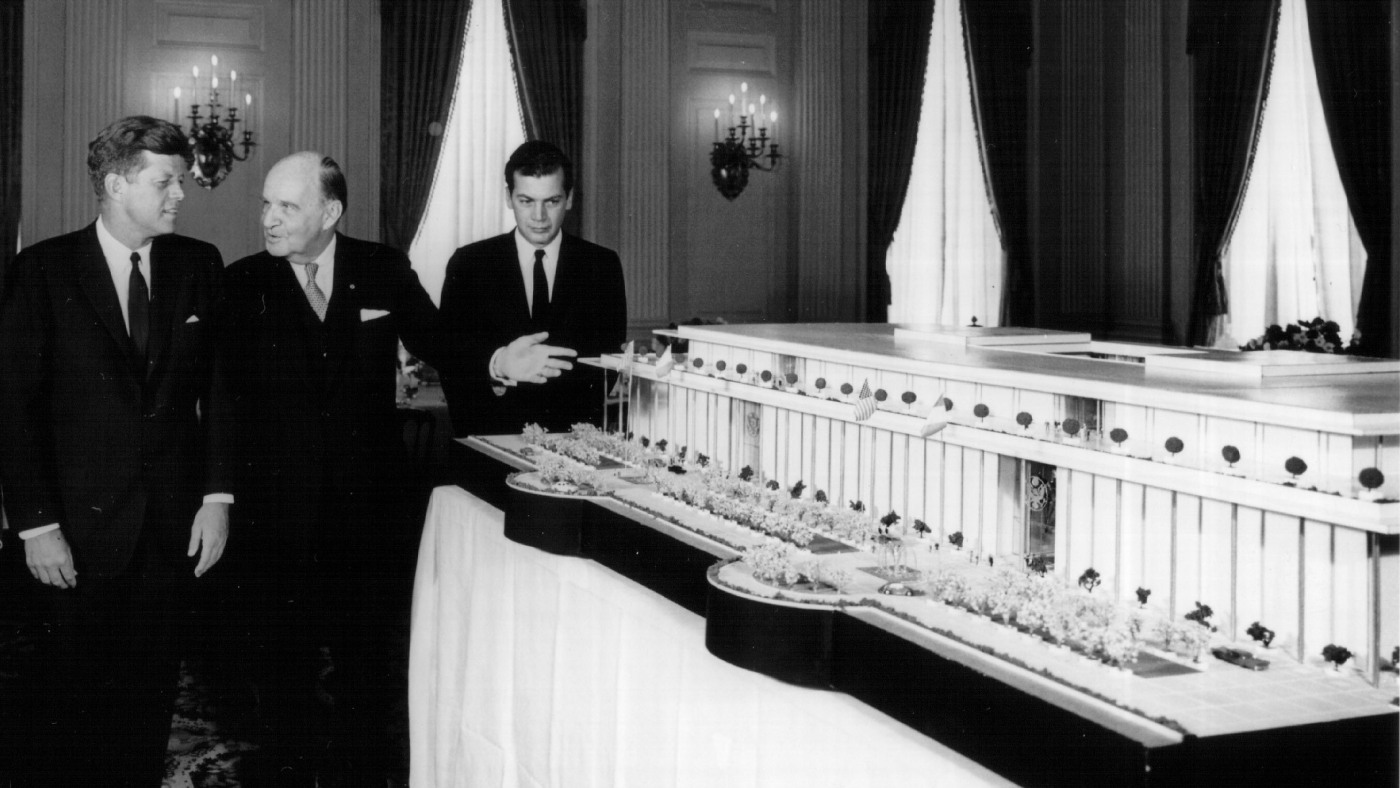Business
Why workers still swelter, weeks after new heat standards took effect for indoor worksites
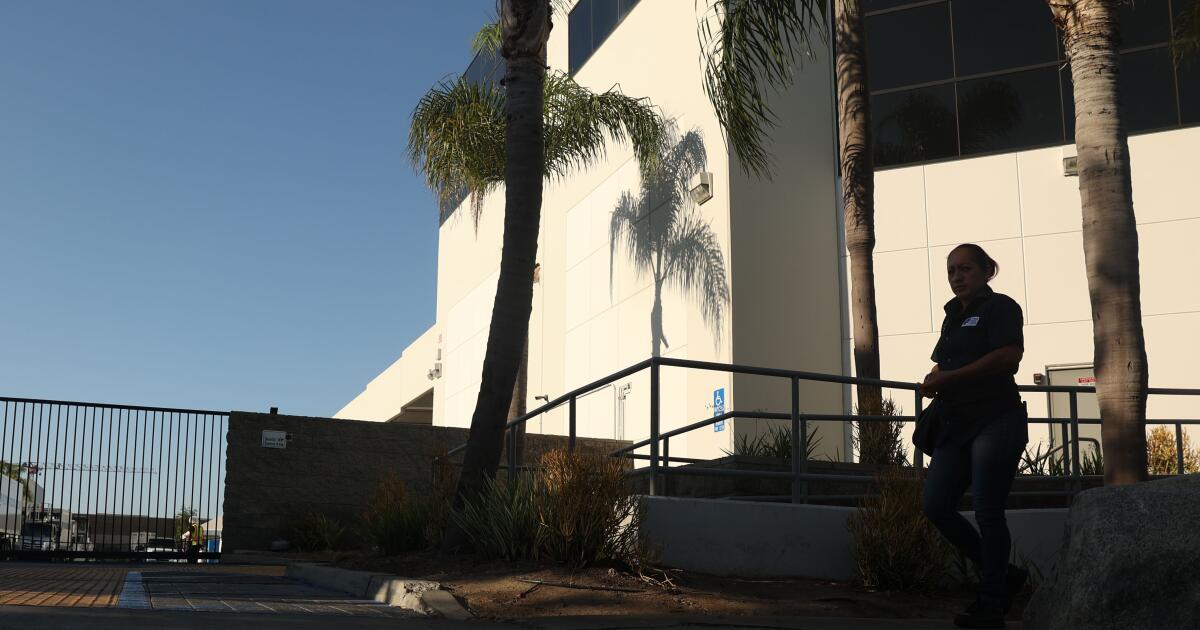
Alexia Rangel recalled sweating as she rang up customer orders at a Taco Bell in Alhambra during an early August heat wave. The air conditioning wasn’t working, she and fellow workers said, and heat radiated from the grills in the kitchen.
She remembers feeling dizzy a few hours into her shift, then her vision shifting to black and white. The color drained from her face, she said, and her lips turned purple.
“I nearly, almost passed out,” recounted Rangel, 20.
Despite new state regulations requiring workplaces to cool indoor climates when they reach unsafe levels, the temperature in the restaurant’s kitchen that day registered 104 degrees, according to a hand-held thermometer that Rangel said a co-worker showed her. Workers would include a photo of the temperature reading in a complaint filed with state regulators.
After years of delays, California’s new rule regulating heat in indoor workplaces took effect in late July. The rule, adopted by the California Division of Occupational Safety and Health, lays out heat illness prevention measures for indoor workplaces. It requires employers to provide easy access to clean drinking water and cooling areas, and to monitor workers for signs of heat illness whenever work site temperatures reach or exceed 82 degrees.
If temperatures climb to 87 degrees, or employees are required to work near hot equipment, employers must cool the work site or rotate workers out of hot environments. Workers are to be allowed an unlimited number of cool-down breaks to protect themselves from overheating.
Under California’s new indoor heat standards, employers are required to provide easy access to clean drinking water and cooling areas.
(Jason Armond / Los Angeles Times)
But more than four weeks after the regulations took effect, interviews with workers and union leaders indicate compliance varies by industry and workplace. Some workers interviewed by The Times said they continue to swelter. Many weren’t aware of the new rules.
The places where heat safety measures were in effect tended to be union shops where regulations had been written into existing contracts, or in industries such as demolition and hazardous materials removal where such precautions have become ingrained in workplace culture.
While employers have a legal responsibility to implement the new measures, advocates stressed that labor groups and community organizations will need to work with the state to raise awareness of the regulations and ensure employees have the information they need to push for changes. A major challenge will be supporting workers who fear retaliation, labor experts said.
“The timeline should be as soon as possible, because heat was killing workers yesterday,” said Renee Guerrero Deleon, an organizer at the Southern California Coalition for Occupational Safety and Health.
Some occupational health experts worry that Cal/OSHA won’t be up to the task of promoting and enforcing the new standards. The agency is confronting a severe staffing shortage that is hampering its ability to conduct workplace inspections. Cal/OSHA is already under fire for failing to aggressively enforce heat regulations for outdoor laborers, raising questions about its ability to ensure compliance with nearly 200,000 indoor sites.
Cal/OSHA spokesperson Peter Melton said in an emailed statement that the agency has begun “extensive campaigns on social media.” It will continue to ramp up inspections and work to increase hiring, Melton said.
The state estimates the heat standards will apply to about 1.4 million workers. The job sites expected to be most affected include industrial warehouses, commercial laundries, manufacturing facilities and restaurant kitchens.
Employers who fail to comply could face Cal/OSHA inspections and penalties of up to $15,873 per violation; penalties rise for deliberate or repeat violations.
At the Taco Bell in Alhambra where Rangel works, employees initially weren’t aware of the heat standards. Still, they were so concerned about conditions that, days after Rangel nearly fainted, workers held a one-day strike in front of the restaurant. They learned of the new rules while filing a complaint with Cal/OSHA.
Taco Bell Corp. did not respond to specific questions about its compliance with the heat law, but issued a more general statement saying it prioritizes the health and safety of employees. “In this case, the franchise owner and operator of this location took swift action to address the issue,” the company said.
Rangel said the restaurant, indeed, has felt cooler in recent days, adding: “It took for someone to almost pass out for them to do all this stuff, like fix the A/Cs.”
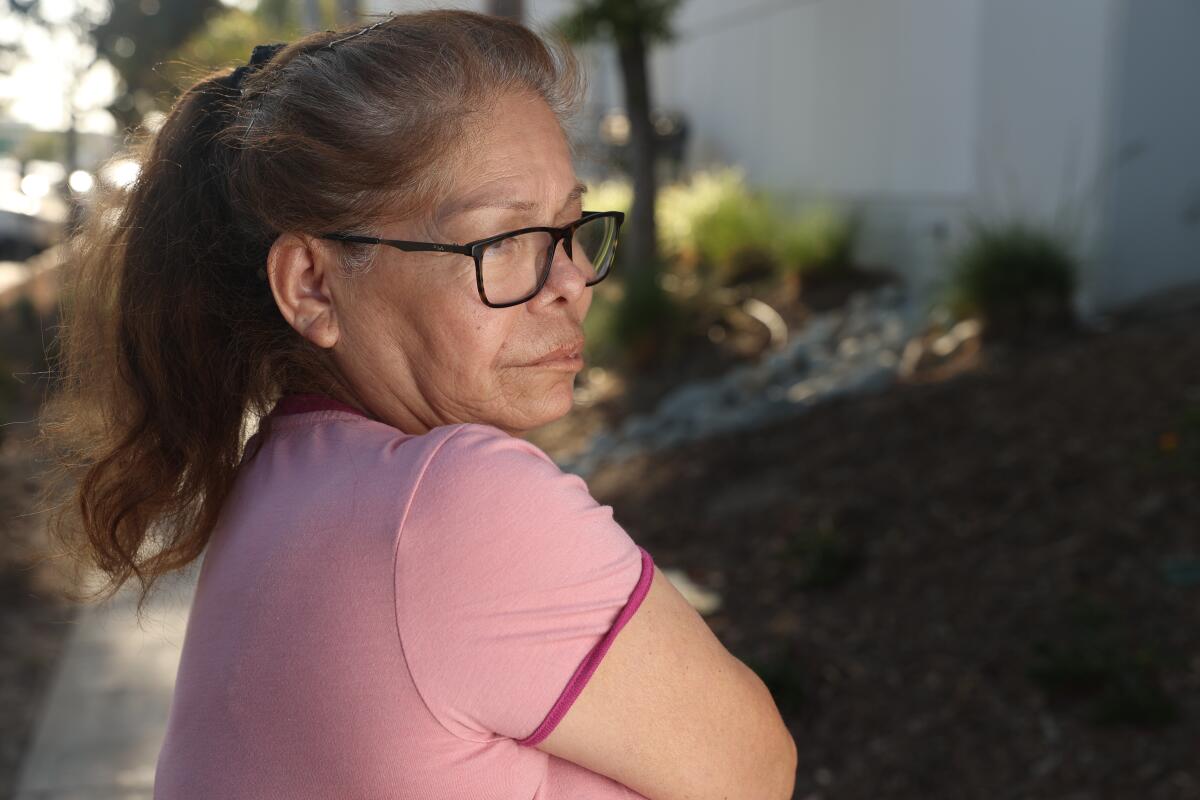
Ana Solis is a dishwasher with Flying Food Group, a catering company that services airlines. She says the heat emanating from dishwashing machines can be suffocating.
(Michael Blackshire / Los Angeles Times)
Ana Solis, 65, is among the workers who said they hadn’t heard about the new regulations until interviewed by The Times.
Solis is a dishwasher with Flying Food Group, a catering company that services airlines. Her work area in Inglewood has air conditioning, but she said that the system isn’t powerful enough to cool a room filled with steamy dishwashing machines.
She said the high heat sometimes leaves her struggling to breathe and with red, irritated skin that she treats at home with creams. Solis said workers at the site are allowed to go to an air-conditioned cafeteria for 10-minute breaks and lunch, but that she sometimes needs additional breaks, escaping to a cool hallway to catch her breath.
“We don’t have the right to a cool-down break,” she said, unaware the new regulations provide that right. “But sometimes I take it, because the heat makes me feel like I’m suffocating.”
Flying Food representatives did not respond to questions from The Times regarding how the company is complying with the heat standards.
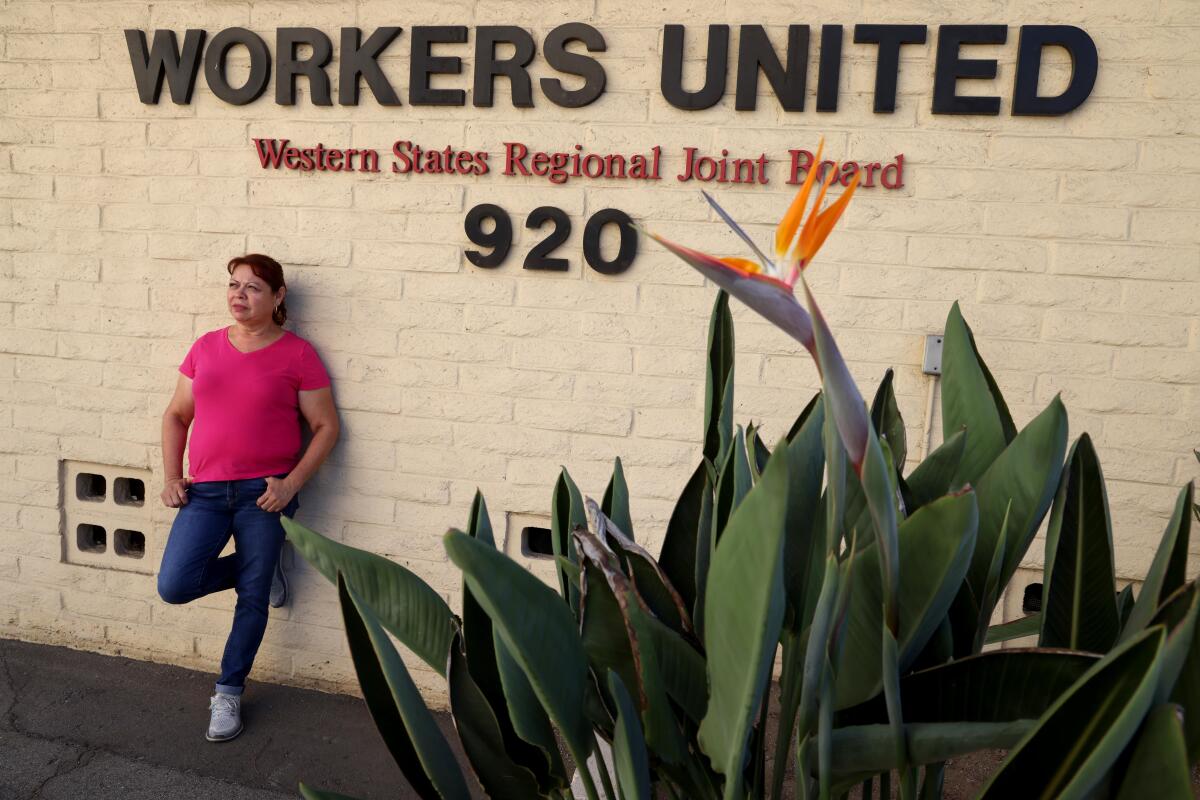
Margot Alvarez, an employee with Braun Linen, a commercial laundry company, was among the workers The Times interviewed who said they were unaware of the state’s new indoor heat regulations.
(Genaro Molina / Los Angeles Times)
Margot Alvarez, who sorts soiled bedding and other materials from convalescent homes and medical facilities at Braun Linen, a commercial laundry in Paramount, was also unaware of the regulations.
Hot steam wafts from a large washing machine as she works in a vinyl gown and gloves. She said the heat generated by sanitizing appliances makes the room feel at least 10 degrees hotter than the outdoor temperature.
After Alvarez raised concerns, she said, management installed a fan by her work station. But she said the fan mainly blows hot air in her direction. Twice in recent weeks, Alvarez said, she grew lightheaded and vomited in the restroom.
Scott Cornwell, owner of Braun Linen, declined to comment on specific concerns Alvarez raised. He said his company works closely with the union that represents its workers, and has installed fans and air conditioning. He said workers have access to cooling areas and water.
“We are in compliance,” Cornwell said.
Bertha Servin, 58, works at Mission Linen Supply in Chino, an industrial laundry where workers sanitize and iron linens, uniforms and bedding for nearby hospitals.
“The big industrial machines, the big dryers, the ironers, everything is hot,” Servin said.
But because of long-standing provisions built into their union contract, Servin said, she and her colleagues have access to fans and cooling machines, and workers come together to make requests, such as asking the company to repair a broken ice maker. The contract also requires the company to provide annual training sessions, where workers are told to be attentive to their bodies in the heat and to feel free to go to the lunch room for a cool-down break.
“If you don’t feel good, you have to report immediately to a supervisor,” she said.
For demolition and construction workers laboring on sizzling roofs or handling hazardous materials in humid plastic enclosures, heat has long been a serious threat. Several workers who specialize in asbestos, lead and mold removal said efforts to safeguard against heat illness predate the state standards. Instead, the industry serves as an example of what protocols can look like once they are ingrained in workplace culture.
Often, buildings undergoing construction have the power shut off, which means there is no air conditioning. On some sites, workers wear respirators and protective body suits as they extract hazardous materials. They often are slinging sledgehammers and crowbars “in a sauna-like environment,” said Fabian Plascencia, of the Northern District Council of Laborers Local 67.
Each morning, PARC Environmental, a hazardous services company based in Fresno, convenes a meeting to discuss the dangers presented by that day’s job site, and review a worksheet that outlines safety protocols, including heat illness prevention, said foreman Rodolfo Nunes.
“The company has always been really strict on heat, since we are from the Central Valley. Our guys need to stay hydrated at all times,” said Nunes, 35.
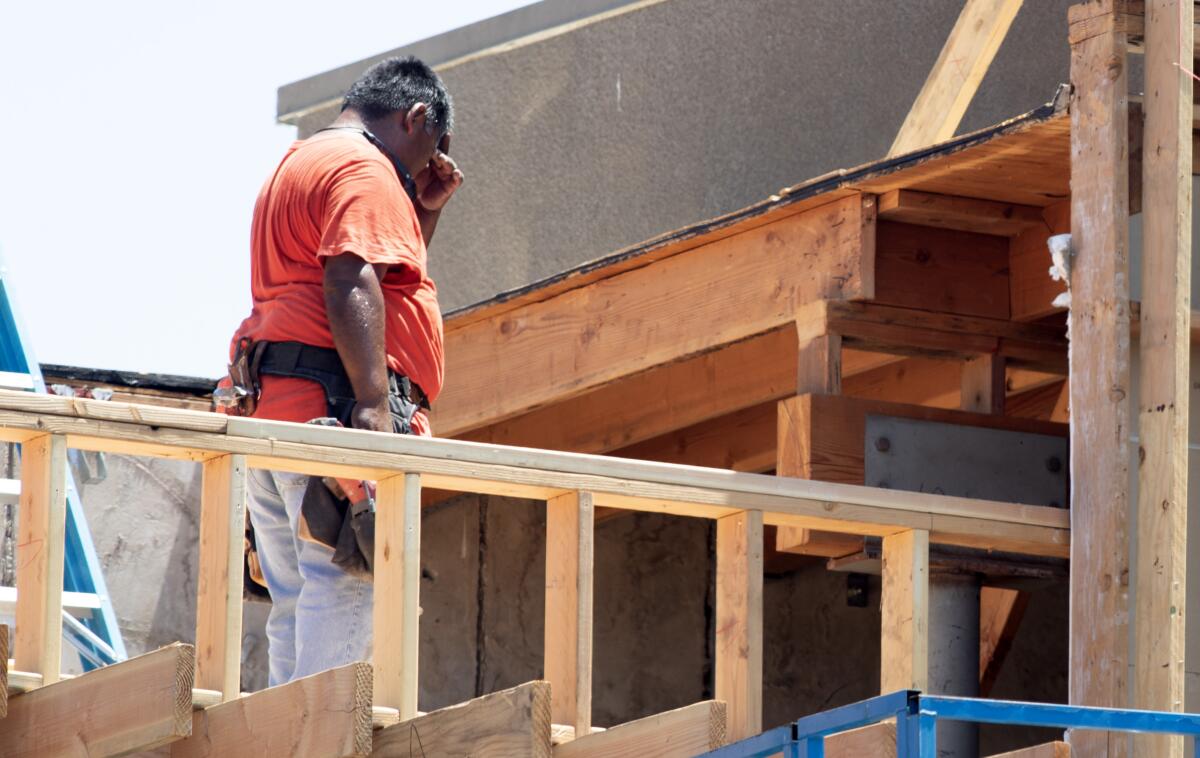
For demolition and construction workers laboring on sizzling roofs or handling hazardous materials in humid plastic enclosures, heat has long been a serious threat.
(Brian van der Brug / Los Angeles Times)
Nunes frequently works in triple-digit conditions. “Oh man, it gets overwhelming,” he said, adding that he’s finally developed a habit of drinking water before he’s thirsty.
“It’s adapting, just getting used to routines,” Nunes said. “When you’re new, you don’t know the first symptoms, like dry mouth. The small things that are going to take you to dehydration.”
Eco Bay, a Bay Area company that does hazardous materials remediation, convened supervisors for a meeting earlier this summer to discuss the new indoor heat rule.
Workers had already been trained to hydrate and take breaks, and to check in with each other for symptoms of heat illness using a buddy system, said Juan Carlos Moreno, 51, a supervisor at Eco Bay. The main changes communicated at the training involved monitoring temperatures throughout the job site and emphasizing to workers that there are no break limits in the heat.
Michelle Moreno, Eco Bay’s safety director, said the company now places thermometers in different areas of the job site and checks them throughout the day to ensure the temperature is under the 82-degree threshold.
During a months-long project inside a poorly ventilated building in the Sacramento area last year, Eco Bay provided workers with respirators that had built-in cooling systems, called a “powered air-purifying respirator.” Moreno said the company’s owner was a laborer himself before he started the company, and so he takes safety seriously and is “more than willing to spend money on it.”
“It comes down to companies having the right culture,” Moreno said, “and making sure people in charge are trained properly to recognize hazards and how to put controls in place, and also training workers so that they know how to recognize warning signs and to speak up if they aren’t feeling well.”
This article is part of The Times’ equity reporting initiative, funded by the James Irvine Foundation, exploring the challenges facing low-income workers and the efforts being made to address California’s economic divide.

Business
U.S. Space Force awards $1.6 billion in contracts to South Bay satellite builders

The U.S. Space Force announced Friday it has awarded satellite contracts with a combined value of about $1.6 billion to Rocket Lab in Long Beach and to the Redondo Beach Space Park campus of Northrop Grumman.
The contracts by the Space Development Agency will fund the construction by each company of 18 satellites for a network in development that will provide warning of advanced threats such as hypersonic missiles.
Northrop Grumman has been awarded contracts for prior phases of the Proliferated Warfighter Space Architecture, a planned network of missile defense and communications satellites in low Earth orbit.
The contract announced Friday is valued at $764 million, and the company is now set to deliver a total of 150 satellites for the network.
The $805-million contract awarded to Rocket Lab is its largest to date. It had previously been awarded a $515 million contract to deliver 18 communications satellites for the network.
Founded in 2006 in New Zealand, the company builds satellites and provides small-satellite launch services for commercial and government customers with its Electron rocket. It moved to Long Beach in 2020 from Huntington Beach and is developing a larger rocket.
“This is more than just a contract. It’s a resounding affirmation of our evolution from simply a trusted launch provider to a leading vertically integrated space prime contractor,” said Rocket Labs founder and chief executive Peter Beck in online remarks.
The company said it could eventually earn up to $1 billion due to the contract by supplying components to other builders of the satellite network.
Also awarded contracts announced Friday were a Lockheed Martin group in Sunnyvalle, Calif., and L3Harris Technologies of Fort Wayne, Ind. Those contracts for 36 satellites were valued at nearly $2 billion.
Gurpartap “GP” Sandhoo, acting director of the Space Development Agency, said the contracts awarded “will achieve near-continuous global coverage for missile warning and tracking” in addition to other capabilities.
Northrop Grumman said the missiles are being built to respond to the rise of hypersonic missiles, which maneuver in flight and require infrared tracking and speedy data transmission to protect U.S. troops.
Beck said that the contracts reflects Rocket Labs growth into an “industry disruptor” and growing space prime contractor.
Business
California-based company recalls thousands of cases of salad dressing over ‘foreign objects’

A California food manufacturer is recalling thousands of cases of salad dressing distributed to major retailers over potential contamination from “foreign objects.”
The company, Irvine-based Ventura Foods, recalled 3,556 cases of the dressing that could be contaminated by “black plastic planting material” in the granulated onion used, according to an alert issued by the U.S. Food and Drug Administration.
Ventura Foods voluntarily initiated the recall of the product, which was sold at Costco, Publix and several other retailers across 27 states, according to the FDA.
None of the 42 locations where the product was sold were in California.
Ventura Foods said it issued the recall after one of its ingredient suppliers recalled a batch of onion granules that the company had used n some of its dressings.
“Upon receiving notice of the supplier’s recall, we acted with urgency to remove all potentially impacted product from the marketplace. This includes urging our customers, their distributors and retailers to review their inventory, segregate and stop the further sale and distribution of any products subject to the recall,” said company spokesperson Eniko Bolivar-Murphy in an emailed statement. “The safety of our products is and will always be our top priority.”
The FDA issued its initial recall alert in early November. Costco also alerted customers at that time, noting that customers could return the products to stores for a full refund. The affected products had sell-by dates between Oct. 17 and Nov. 9.
The company recalled the following types of salad dressing:
- Creamy Poblano Avocado Ranch Dressing and Dip
- Ventura Caesar Dressing
- Pepper Mill Regal Caesar Dressing
- Pepper Mill Creamy Caesar Dressing
- Caesar Dressing served at Costco Service Deli
- Caesar Dressing served at Costco Food Court
- Hidden Valley, Buttermilk Ranch
Business
They graduated from Stanford. Due to AI, they can’t find a job
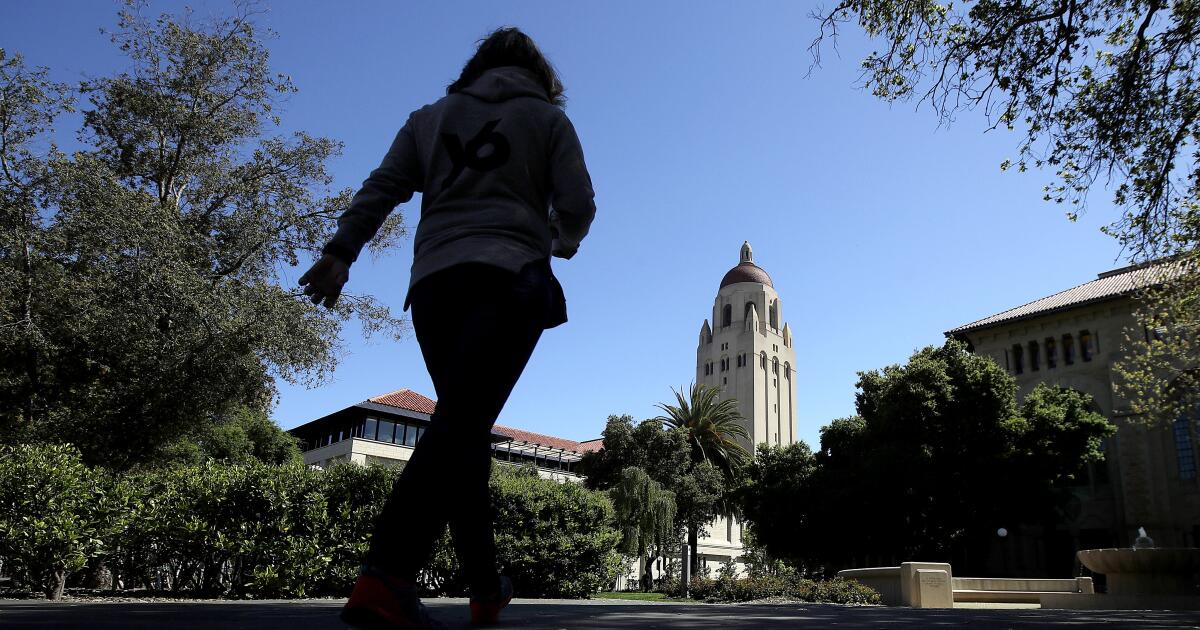
A Stanford software engineering degree used to be a golden ticket. Artificial intelligence has devalued it to bronze, recent graduates say.
The elite students are shocked by the lack of job offers as they finish studies at what is often ranked as the top university in America.
When they were freshmen, ChatGPT hadn’t yet been released upon the world. Today, AI can code better than most humans.
Top tech companies just don’t need as many fresh graduates.
“Stanford computer science graduates are struggling to find entry-level jobs” with the most prominent tech brands, said Jan Liphardt, associate professor of bioengineering at Stanford University. “I think that’s crazy.”
While the rapidly advancing coding capabilities of generative AI have made experienced engineers more productive, they have also hobbled the job prospects of early-career software engineers.
Stanford students describe a suddenly skewed job market, where just a small slice of graduates — those considered “cracked engineers” who already have thick resumes building products and doing research — are getting the few good jobs, leaving everyone else to fight for scraps.
“There’s definitely a very dreary mood on campus,” said a recent computer science graduate who asked not to be named so they could speak freely. “People [who are] job hunting are very stressed out, and it’s very hard for them to actually secure jobs.”
The shake-up is being felt across California colleges, including UC Berkeley, USC and others. The job search has been even tougher for those with less prestigious degrees.
Eylul Akgul graduated last year with a degree in computer science from Loyola Marymount University. She wasn’t getting offers, so she went home to Turkey and got some experience at a startup. In May, she returned to the U.S., and still, she was “ghosted” by hundreds of employers.
“The industry for programmers is getting very oversaturated,” Akgul said.
The engineers’ most significant competitor is getting stronger by the day. When ChatGPT launched in 2022, it could only code for 30 seconds at a time. Today’s AI agents can code for hours, and do basic programming faster with fewer mistakes.
Data suggests that even though AI startups like OpenAI and Anthropic are hiring many people, it is not offsetting the decline in hiring elsewhere. Employment for specific groups, such as early-career software developers between the ages of 22 and 25 has declined by nearly 20% from its peak in late 2022, according to a Stanford study.
It wasn’t just software engineers, but also customer service and accounting jobs that were highly exposed to competition from AI. The Stanford study estimated that entry-level hiring for AI-exposed jobs declined 13% relative to less-exposed jobs such as nursing.
In the Los Angeles region, another study estimated that close to 200,000 jobs are exposed. Around 40% of tasks done by call center workers, editors and personal finance experts could be automated and done by AI, according to an AI Exposure Index curated by resume builder MyPerfectResume.
Many tech startups and titans have not been shy about broadcasting that they are cutting back on hiring plans as AI allows them to do more programming with fewer people.
Anthropic Chief Executive Dario Amodei said that 70% to 90% of the code for some products at his company is written by his company’s AI, called Claude. In May, he predicted that AI’s capabilities will increase until close to 50% of all entry-level white-collar jobs might be wiped out in five years.
A common sentiment from hiring managers is that where they previously needed ten engineers, they now only need “two skilled engineers and one of these LLM-based agents,” which can be just as productive, said Nenad Medvidović, a computer science professor at the University of Southern California.
“We don’t need the junior developers anymore,” said Amr Awadallah, CEO of Vectara, a Palo Alto-based AI startup. “The AI now can code better than the average junior developer that comes out of the best schools out there.”
To be sure, AI is still a long way from causing the extinction of software engineers. As AI handles structured, repetitive tasks, human engineers’ jobs are shifting toward oversight.
Today’s AIs are powerful but “jagged,” meaning they can excel at certain math problems yet still fail basic logic tests and aren’t consistent. One study found that AI tools made experienced developers 19% slower at work, as they spent more time reviewing code and fixing errors.
Students should focus on learning how to manage and check the work of AI as well as getting experience working with it, said John David N. Dionisio, a computer science professor at LMU.
Stanford students say they are arriving at the job market and finding a split in the road; capable AI engineers can find jobs, but basic, old-school computer science jobs are disappearing.
As they hit this surprise speed bump, some students are lowering their standards and joining companies they wouldn’t have considered before. Some are creating their own startups. A large group of frustrated grads are deciding to continue their studies to beef up their resumes and add more skills needed to compete with AI.
“If you look at the enrollment numbers in the past two years, they’ve skyrocketed for people wanting to do a fifth-year master’s,” the Stanford graduate said. “It’s a whole other year, a whole other cycle to do recruiting. I would say, half of my friends are still on campus doing their fifth-year master’s.”
After four months of searching, LMU graduate Akgul finally landed a technical lead job at a software consultancy in Los Angeles. At her new job, she uses AI coding tools, but she feels like she has to do the work of three developers.
Universities and students will have to rethink their curricula and majors to ensure that their four years of study prepare them for a world with AI.
“That’s been a dramatic reversal from three years ago, when all of my undergraduate mentees found great jobs at the companies around us,” Stanford’s Liphardt said. “That has changed.”
-

 Iowa5 days ago
Iowa5 days agoAddy Brown motivated to step up in Audi Crooks’ absence vs. UNI
-

 Iowa7 days ago
Iowa7 days agoHow much snow did Iowa get? See Iowa’s latest snowfall totals
-

 Maine4 days ago
Maine4 days agoElementary-aged student killed in school bus crash in southern Maine
-

 Maryland5 days ago
Maryland5 days agoFrigid temperatures to start the week in Maryland
-

 Technology1 week ago
Technology1 week agoThe Game Awards are losing their luster
-

 South Dakota6 days ago
South Dakota6 days agoNature: Snow in South Dakota
-

 New Mexico3 days ago
New Mexico3 days agoFamily clarifies why they believe missing New Mexico man is dead
-

 Nebraska1 week ago
Nebraska1 week agoNebraska lands commitment from DL Jayden Travers adding to early Top 5 recruiting class




